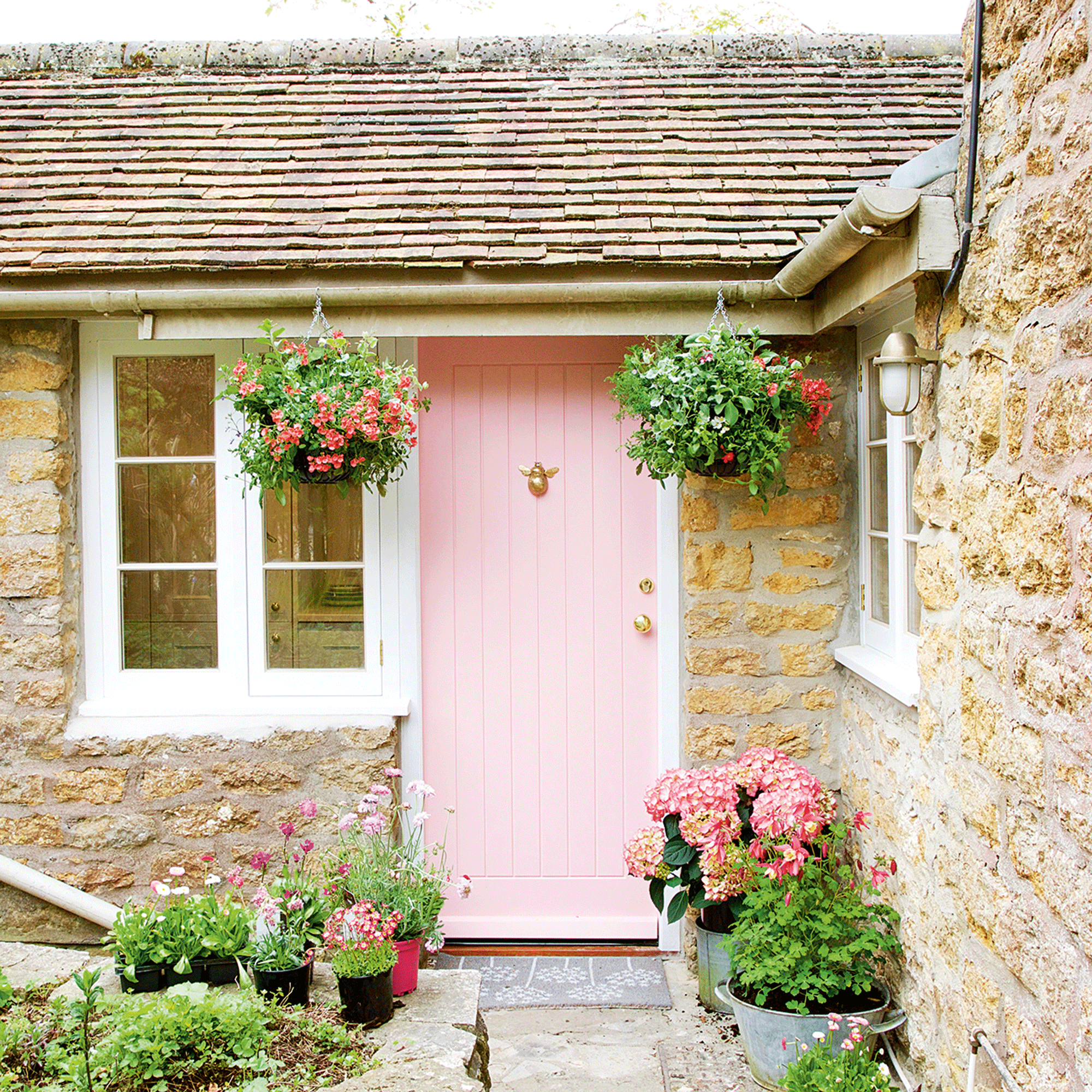
Adding a hanging basket or two brings an instant uplift to any outdoor space, whether you have a sprawling yard or a petite balcony. While learning how to plant a hanging basket can be simple and inexpensive to do. There are a few simple hanging basket mistakes that have given these lovely garden ideas a reputation for being difficult to maintain.
From choosing the best compost and lining the hanging basket, to selecting long-lasting plants and getting the watering and feeding right, there’s a lot to think about for such a small concentration of planting.
'Nothing looks more cheerful than a hanging basket full of colourful plants,' says Sarah Squire, chairman (CORR) of Squire’s Garden Centres. 'However, plants in any sort of container do not have the moisture and nutrients available to plants in borders, so they do require special consideration.'
Hanging basket mistakes to avoid
Whether your are keen to enrich your front garden ideas with hanging baskets, or try growing tomotatoes or strawberries in one, here's what the experts say you should never do with a hanging basket.
1. Cramming in too many plants
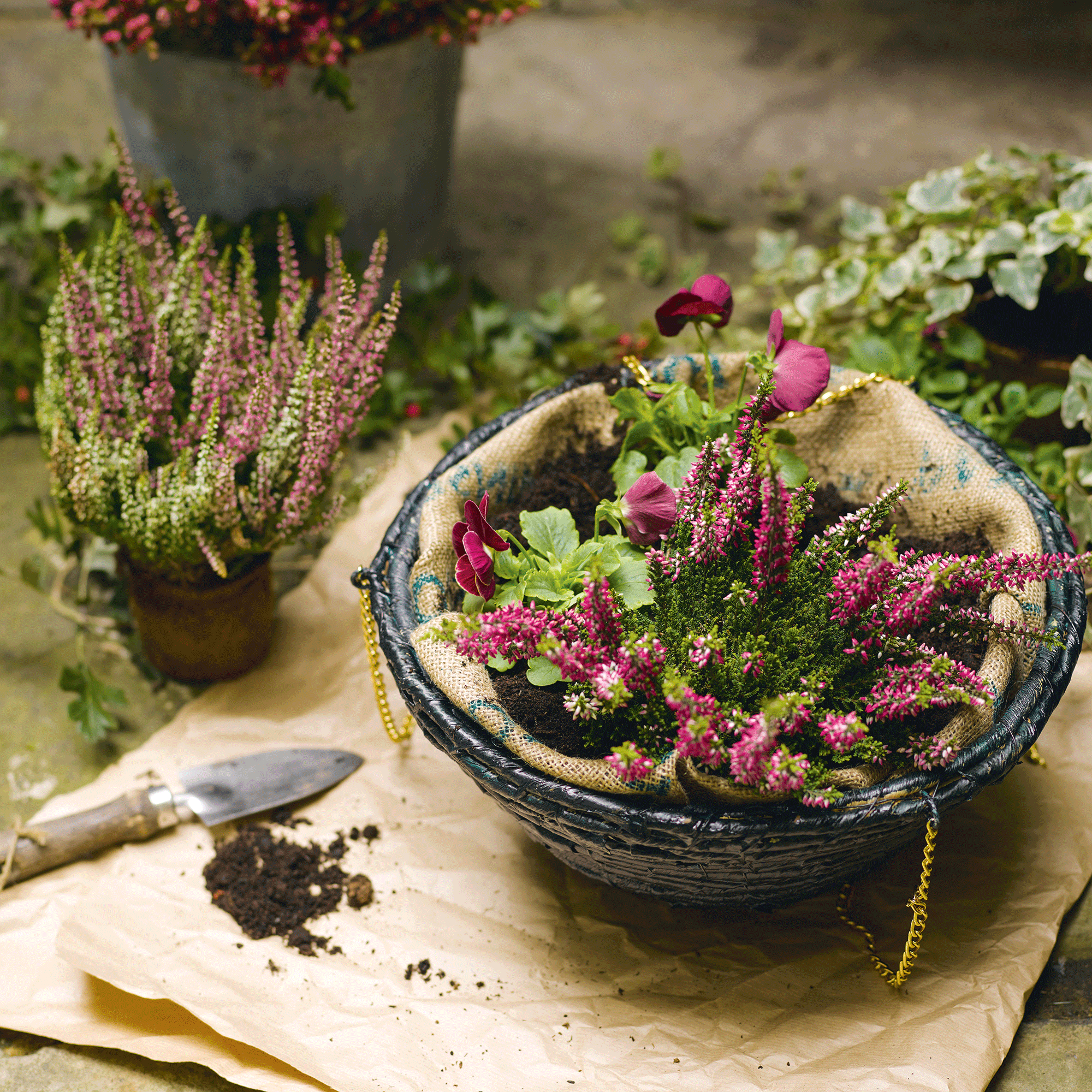
Everyone is keen to follow the latest garden trends but don’t be tempted to over-buy the latest plants for your hanging basket. Cramming in too many plants won’t leave space for them to grow and establish strong root systems, so they won’t be able to take up water effectively. This is one of the major hanging basket mistakes.
How many plants should you include in a hanging basket? 'Judging the number of plants to use can be tricky as it really depends on the type of plants you are using,' says Annelise Brilli, horticultural expert at Thompson & Morgan. 'Baskets will look sparse when you first plant them but will quickly bulk up.'
As a rough guide, she suggests, for the top of a 12 to 14-inch basket, use three to five 9cm plants. For a 16 to 18-inch basket use about five to seven. Add extra trailing plants for the sides if desired.
2. Choosing the wrong plants
There are so many wonderful plants for hanging baskets, from bold geraniums, pelargoniums and petunias to tiny-flowered lobelia, and they’re all easily available and relatively inexpensive. Many have both trailing and upright varieties so you can choose the perfect combination of height at the top and trailing at the sides for your hanging basket.
However, just as with any other garden plant, take the site into consideration or you’ll make another hanging basket mistake. If you’re after balcony garden ideas , opt for plants such as geraniums, suggests Sarah, as they can take full sun in an exposed site. 'But you can’t force sun-lovers to thrive in shadier spots,' she says. 'Others, such as fuchsias and busy lizzies, will take partial shade.'

3. Relying on liquid feeds
Bearing in mind the demands placed on all those plants in such a confined space, you’ll want to offer extra sustenance, especially in extreme weather such as very hot summers. 'But don’t rely on liquid feeds,' says Annelise. 'Most of it will just end up draining out onto the floor and this is another hanging basket mistake. Instead, incorporate slow-release fertiliser into the compost when you plant up.'
Add the slow-release granules to the compost when you plant up your hanging basket, making sure that it is evenly distributed.
4. Using too much compost
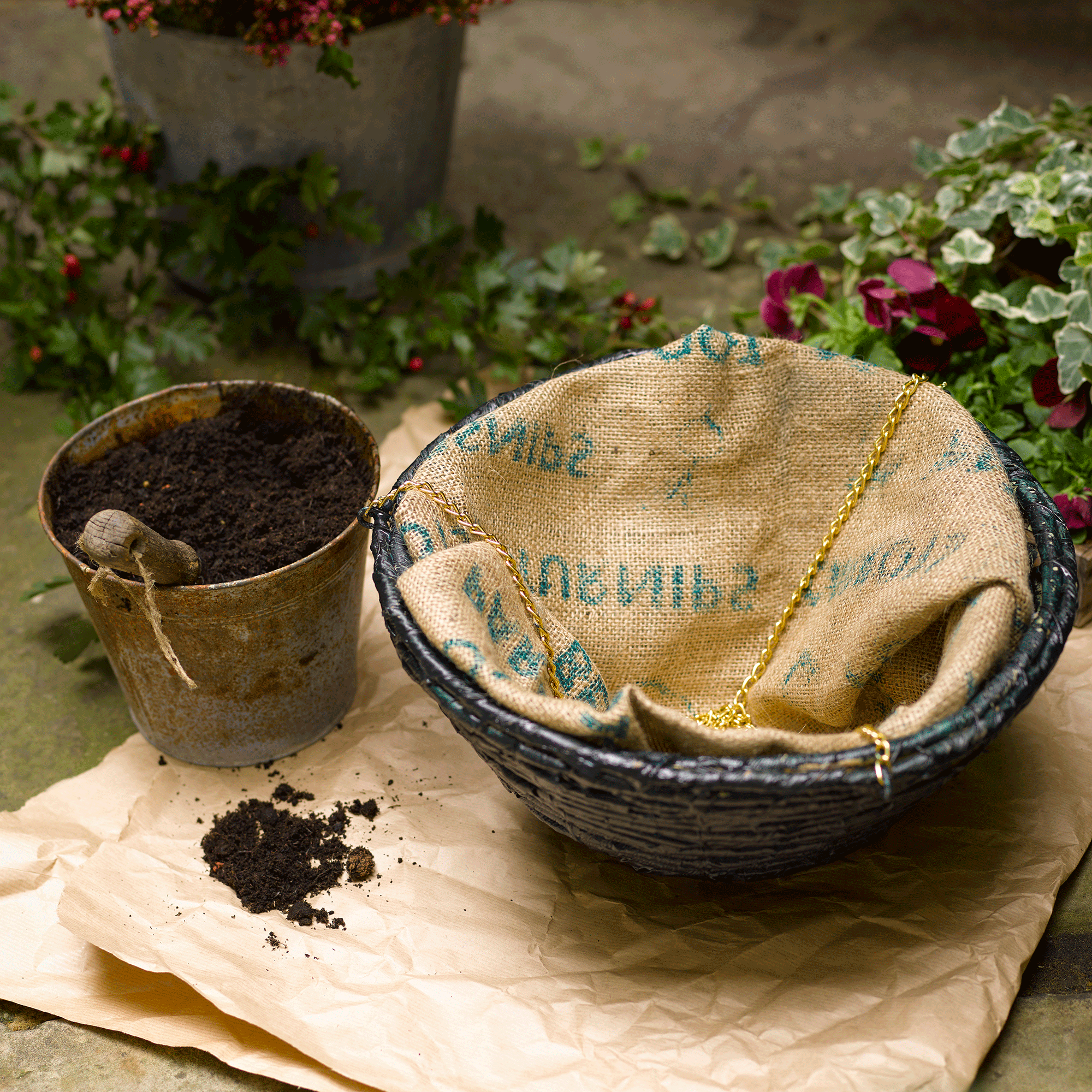
If you love your plants as much as we do, you’ll probably want to make sure they’re bedded down nicely in their new hanging basket home with plenty of compost to tuck them in. However, Sarah warns against over-filling your hanging basket with compost right up to the brim, because this hanging basket mistake will make it difficult to water effectively.
Her advice is to allow a few centimetres of space at the top of your hanging basket so water can soak down into the soil rather than going over the sides.
5. Choosing cheap compost
Compost in hanging baskets has to work super-hard because it’s under a lot of pressure to support an intense display of plants. So don’t skimp on the choice, as that’s a basic hanging basket mistake. Avoid compost which has been padded out with organic matter such as coir. Never use common garden soil in a hanging basket. It’s far too heavy and will not drain properly.
Experts at the RHSrecommend choosing a good quality, peat-free multi-purpose compost for hanging baskets with a season no longer than a year. Do check if your plants have any special compost requirements though. If you want to include heathers in autumn and winter, for example, it’s best to go for ericaceous compost to meet their specific needs.
6. Drowning with too much water
You have to keep your hanging basket watered, right? Well, yes, but Boyd Douglas-Davies, plants director at British Garden Centres, believes it’s possible to water it too much and create another hanging basket mistake.
'When it comes to hanging baskets, the most common mistake gardeners make is watering them too much,' he says. 'Watering every day causes the excess to drain out of the bottom of the basket. We recommend using water-saving gel, which retains and releases water as needed. As a result, the soil in your hanging basket will retain moisture for the plants to absorb.'
If you’re worried about your hanging basket drying out, and in especially hot weather, you can always follow the advice of garden designer Lee Burkhill, founder of Garden Ninja. He says there’s a 'fine balance' between keeping hanging baskets hydrated and washing away vital nutrients. His solution? 'Dunk them in a bucket once or twice a week until they’ve absorbed what they need.'
7. Forgetting drainage
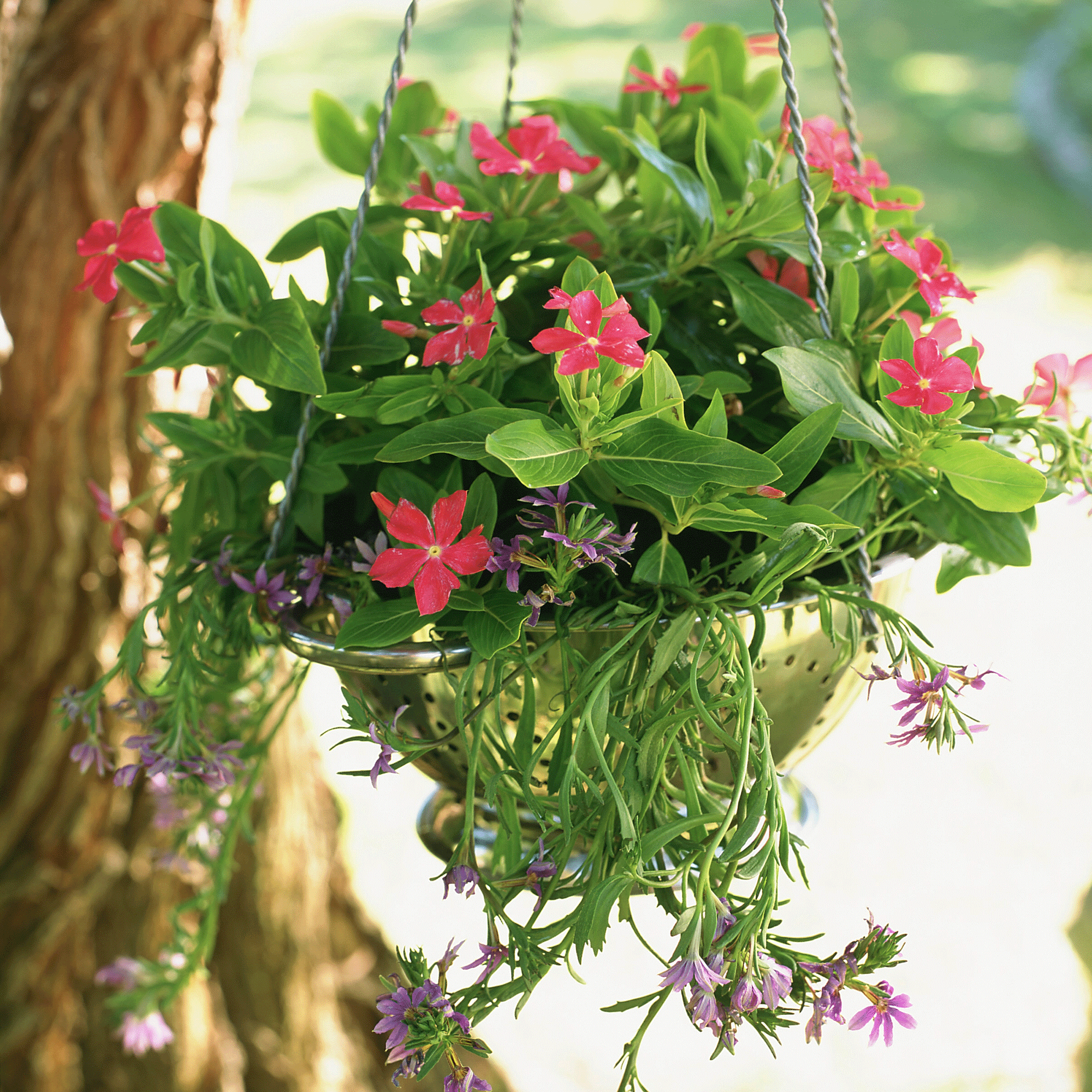
You might think it’s important to keep as much water in the basket as possible. But many popular hanging basket plants such as geraniums and pelargoniums, don’t like their feet - roots - getting wet.
Also, if water settles and stays in the bottom of the basket, it can turn fetid, allowing roots to root and causing a nasty whiff – a major hanging basket mistake. 'You really do need to make sure that basket liners have drainage holes in them,' says Sarah. 'Drainage is so important, so do check your basket is well set up for this, making extra holes if you think that’s necessary.'
8. Not bothering to prune and trim
Hanging baskets make are a lovely addition to either side of a front door, and will add that extra touch of colour and interest to your kerb appeal.
Chris Bonnett, founder of Gardening Express says introducing hanging baskets can even increase the value of your home: 'A good rule of thumb when selling your house is to keep it looking neat by planting seasonal flowers to catch the eye of buyers.'
So this means keeping your hanging baskets in tip-top condition to avoid a messy hanging basket mistake. 'My top tip for this is to prune back plants halfway through the season,' says Lee. 'This will keep them more compact and focus their remaining energy on flowers, not excess foliage growth.'
9. Clinging on to dead or dying plants
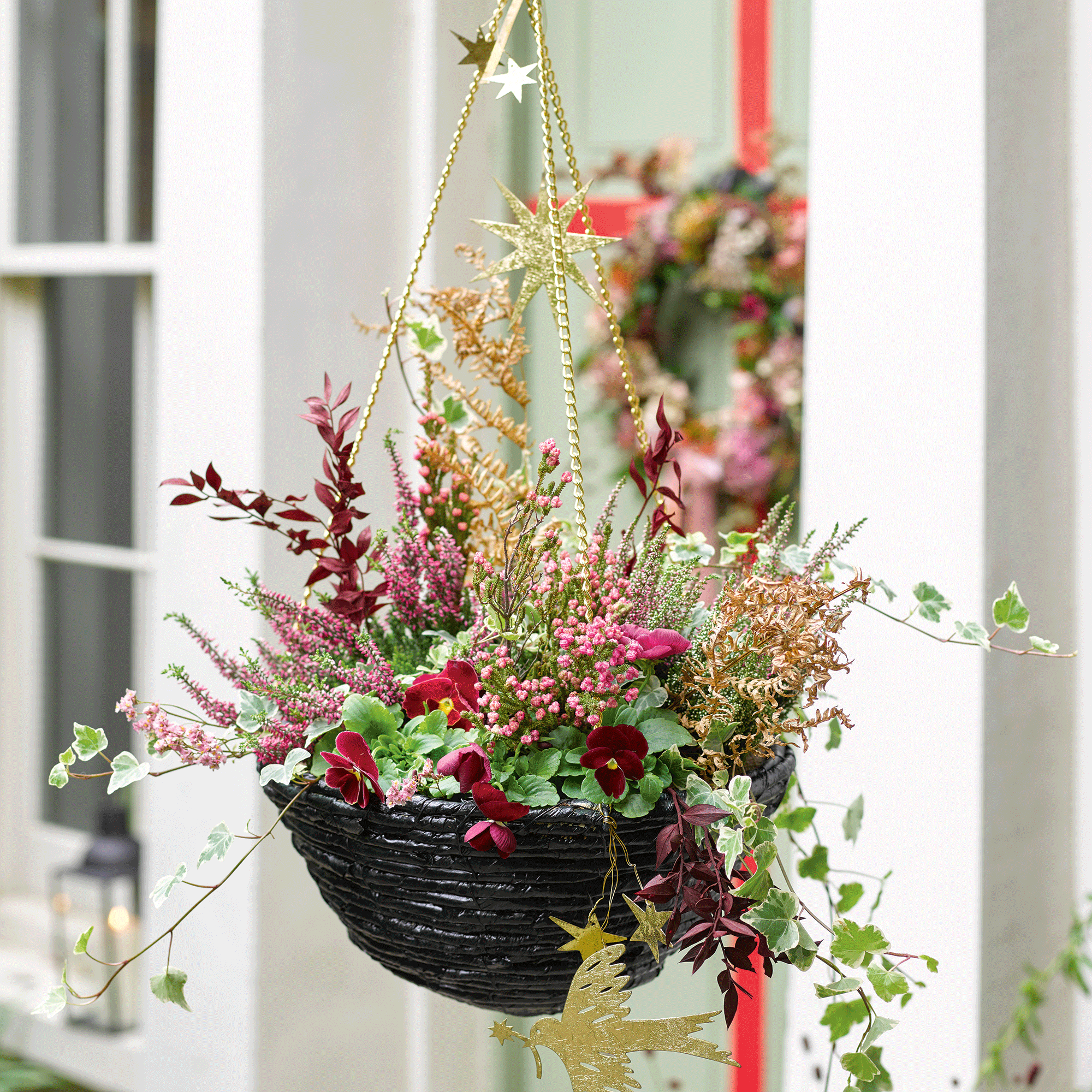
You’re going to have to be brutal here. Lee says that if your hanging basket plants are dying chances are they will have already gone beyond saving. 'The best way to prevent this hanging basket mistake happening is to look after them properly in the first place,' he warns. 'However, if you’ve only lost a couple of plants, then simply lift the baskets down and replace the individual plants to extend the season.'
10. Using sphagnum moss
If you’re using a standard wire hanging basket, it will need to be lined. You can buy readymade cardboard liners and fibrous materials sold for this purpose, but you should avoid the hanging basket mistake of sphagnum moss, says the RHS as it may not be harvested from sustainable sources.
Their recommendation for a thrifty option for turning a hanging basket into a budget garden idea is to collect moss from the lawn, aiming to cover the inside of the basket with a moss layer about 1.5cm thick.
Can you overwater hanging baskets?
Damaging your hanging basket plants through overwatering is unusual because hanging baskets tend to drain rapidly, but it’s easy to waste water and wash away nutrients through excessive watering. 'Avoid this by slowing down the rate at which you apply water,' suggests Annelise. 'If you water gently, it will have time to soak in. Your aim is to keep baskets consistently moist.'
Why do hanging baskets get leggy?
Poor light, low nutrient levels, and plants that have exhausted themselves towards the end of the season will all cause leggy growth. 'Keep plants well-fed by incorporating a slow-release fertiliser into the compost mix and regularly pinch them back to encourage dense, bushy growth,' is Annelise’s advice.
Why are my hanging baskets drooping?
If your hanging baskets are drooping chances are they have dried out. The plants will have reduced water capacity, and if you leave it for too long they will die or be irreparably damaged.
Lee says in really hot weather, the best thing to do is to take hanging baskets down until temperatures cool and soak them in a bucket of water: 'And if you’re going on holiday in summer, don’t risk it. Take your hanging baskets down and leave them in the shade somewhere.'
How do you revive a dying hanging basket?
'Be brave,' says Annelise. 'Shear the plants back by about a half to healthy growth then soak them in a bucket of water containing liquid feed. Continue to keep the basket consistently moist and apply liquid feed every other week. Your plants will soon bounce back to give a second flush of flowers.'







